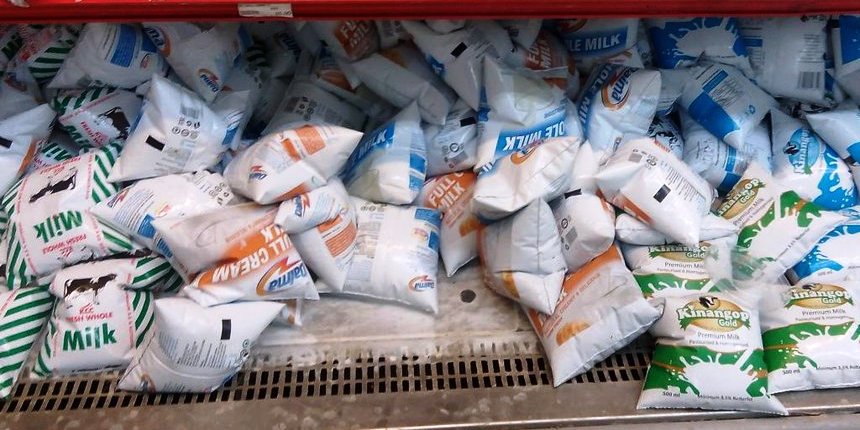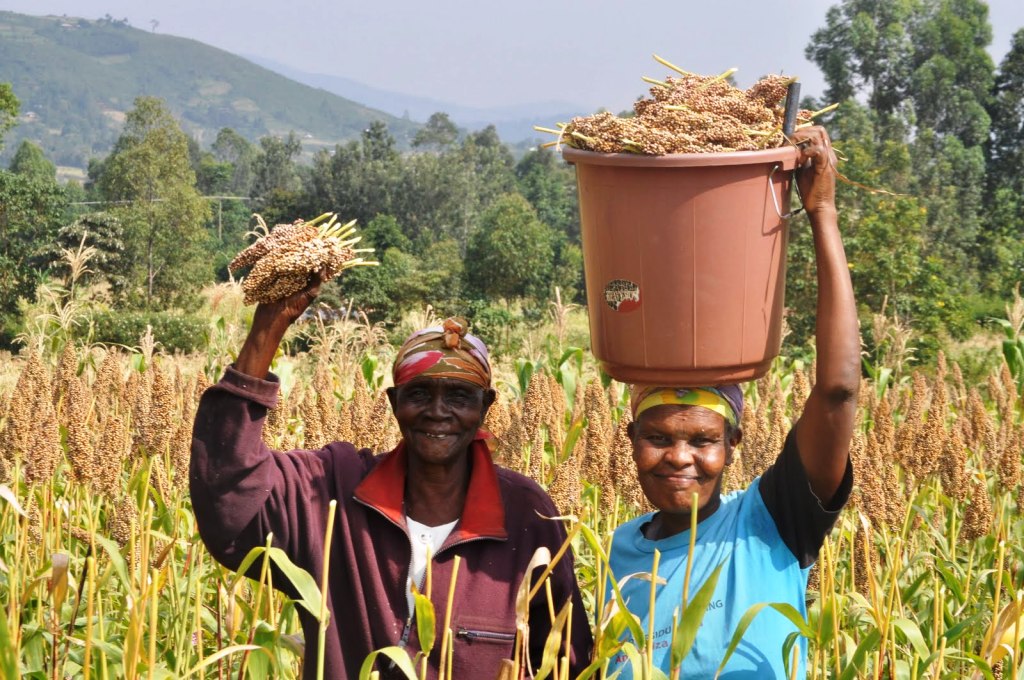
Fresh milk at a supermarket. Two processor have announced the drop of the price of fresh milk by Sh10. Photo by The Star
Fresh milk consumers will pay Sh10 less for a half liter of milk after two leading processors announced the drop due to improved deliveries from farmers and importation of duty-free milk to covert the deficit.
New Kenya Co-operative Creameries (KCC) and Brookside Dairy announced the drop On Monday. The cost of half a litre packet of milk will retail at less than Sh60, depending on the brand.
Brookside and New KCC are the leading milk processors in the country. A packet of KCC will be retailing at Sh50 from the previous Sh60.
Tuzo, Ilara and Molo – brands owned by Brookside - will drop to retail at Sh52, Sh55 and Sh50 respectively after shedding off Sh10 each.
Milk started rising after the deliveries by farmers to the processors dropped after the drought that struck the country from mid November last year to April this year. Pastures dried up and the maize shortage caused a rise in feeds production costs, leading to the reduced milk output from farmers.
But in a statement, KCC reported a 20 per cent increase in deliveries of milk. Brookside reported a 30 per cent increase in farmers’ deliveries.
Besides the close to two-months rain, which has caused the recovery of green pastures like Napier grass, the government recently allowed for importation of 9,000 tonnes of duty free powdered milk to plug in the deficit gap.
By February 2017, the milk delivery to processors had dropped to 36.11 million litres from 56.44 million litres in October 2016. This caused the increase of the cost of the 500ml of from an average of Sh50 to more than Sh60.
READ ALSO: Milk farmers turn to hawkers for profits
READ ALSO: New Farmpro fodder doubles milk
READ ALSO: Brachiaria grass triples Siaya farmer's milk production
Other farmers started selling milk to hawkers, who were offering higher prices per litre than the mainstream processors. The milk is sold in town in automated teller machines and other fresh shops.
Brookside milk procurement director John Gethi said in a statement that the company will monitor the situation and adjust the prices appropriately.
Write comment (0 Comments)
















